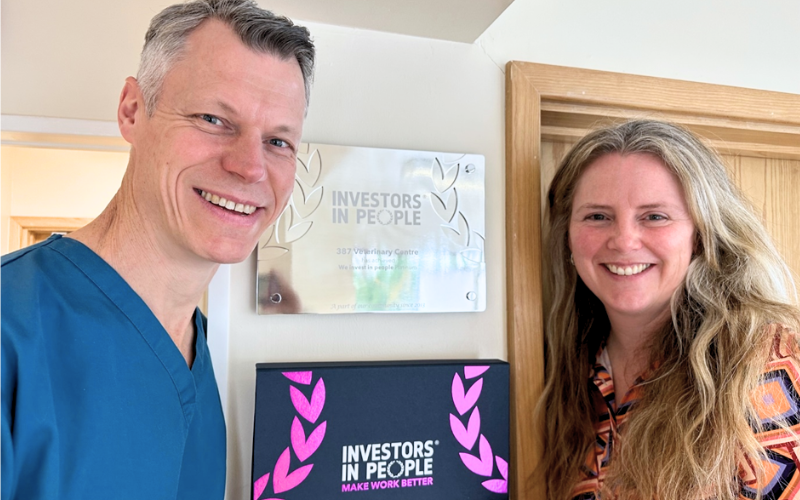The veterinary industry is in a constant state of re-invention, and we see this accelerated post-Covid.
The dramatic repercussions caused by the pandemic have exposed issues in practice life, ways of working and the world as we know it. With 3 million new pets, 25% fewer vets and staff shortages of up to 1-2 vets and nurses in most UK practices, it’s no surprise we have a pandemic paradox. Veterinary businesses are booming while teams are burnt-out. Exhaustion and compassion fatigue are endemic in the profession, resulting in depleted skill, time, and energy.
Even before the pandemic, a BVA study revealed alarming statistics: that 37 per cent of respondents were actively thinking of leaving the profession, 63 per cent felt they worked too hard, 21 per cent felt unable to cope with the demands of the job, and 48 per cent confirmed they were ‘burnt-out’. (1) Furthermore, with 50 per cent of vets moving out of practice 3 to 7 years post-graduation, much work is needed to remedy the situation. Yes, the pandemic accelerated these emotive responses from practice professionals, but let’s be clear, the issues were already present. So, we need to ask ourselves, is the profession broken? Is it fit for purpose? Can we heal our toxic work environment and grow?
It would be easy to measure practice growth on speed, efficiency, and effectiveness. However, with an over-abundance of new work and an industry chronically under-resourced, prioritising these metrics over and above human factors risks making a dire situation worse. As a compassion-driven industry, we need to review the current model and define a post-covid, future-ready business model that demonstrates resilience and empathy from the ground up.
Among my Vet Dynamics clients, I have witnessed that human-centred leadership and a healthy culture does have the potential to initiate growth and produce significant changes. We can find creative, progressive solutions to redress the balance of self-worth, anxiety, and stress levels by addressing certain professional and industry paradoxes, which teams negotiate daily. We can become better organised for a post-pandemic future with veterinary leaders embracing imperatives that focus on people and purpose at the core and product, process, and platforms on the periphery.
Let’s explore those solutions.
Take a stance on purpose.
Purpose attracts people to your practice, makes them want to remain there and helps them thrive. Understanding your purpose (your ‘why’), both personally and collectively, is imperative to both the individuals’ and the practice’s success. After all, most veterinary professionals are emotionally sensitive – our feelings directly impact how we work.
The default indicator of success, comfort, and profitability is being busy; this is what I call the ‘busy-trap’. Unfortunately, busy-ness does NOT equate to a successful, healthy, or profitable practice. It just means we are stressed and working out of flow. Being stressed lowers our sense of worth and alters our opinion of our abilities. It prevents us from connecting with our role or focusing on goals and aspirations, reducing our sense of purpose. It all gets swept away by factors that take over. We need to review who we are, what we want, what we believe and become re-engaged with what drives us to the veterinary industry in the first instance.
On top of that, a disconnect has occurred between the team and the clients. A misconception is that the most enjoyable part of being a vet is working with animals. This narrative fails to serve us. It underpins anxiety, fuels victimisation, and only provides us with a scapegoat, rather than a solution. The frustrations we experience in practice manifest from discontent, and the client is not the root cause.
Know your Value Agenda
Having a shared purpose sets the compass for growth, but what differentiates us as individuals? Our values play an essential role in defining who we are and what makes us unique. Engagement comes from aligning someone’s values with the Values Agenda of the business, which should incorporate Financial, Human, Social, Intellectual, Manufactured and Natural values. Alignment means reviewing the people within the team, providing the resources required and linking everything back to the value agenda, which acts as a cornerstone.
The value garnered from a strong network of empowered and dynamic team members, especially within veterinary teams that work closest with clients, requires much more consideration to enable success. The leadership team is responsible for identifying values, dividing skills, and managing the workload.
Culture is key
Culture defines a workplace and forms a foundation for the business’ organisational health. It allows strong performance over time. But what is the secret sauce? It’s the combination of ingredients including specific, observable behaviour that everyone must adhere to, defined by rules and actions that enables sustainability for the business whilst delivering on the core purpose.
People long to belong. Whether a practice leader, a manager, or a colleague, we all long to belong. We want to be part of something meaningful and lasting. This connection, affiliation, social cohesion, and purpose will benefit everyone and the business. It creates a healthy, durable, and growth-enabled culture.
Team Alignment
Operational efficiency requires us to move away from conventional hierarchical business structures that rank people according to status or authority and toward an organic organising system instead. An example is a holocratic team that sees more interconnectedness, faster decision-making, and autonomy. Although this is not conventional within corporate practice or many practices, there is enormous scope in any business to embrace this system for positive change.
Employees expect and appreciate very different things today than ten years ago; future-ready leadership teams have a duty of care to provide them. The pandemic, for example, has magnified the expectations of millennial and generation Z age groups. What does this mean? While still focusing on the financial, intellectual, and physical aspects available at the practice (such as equipment), the value agenda should also encompass the business’s human, social, and natural enhancement. Leaders can make external resources available to decision-makers, lightening the load, empowering the team and leveraging talent. They can find internal resources by nurturing critical or influential voices within the group – not necessarily the voices of those at the top. Every team member is unique and offers a diverse and exclusive set of soft and hard skills. Listening to them can only bring strength and vitality to the business when done pragmatically.
Build an Eco-system
At Vet Dynamics, we speak a lot about building community: a supportive eco-system of relationships, actively involving technology to fuel growth and make frictionless, sustainable, effective change for the future. We power human-centred eco-success by working with industry partners, employees, teams, and support networks.
A shift in paradigms requires big thinking on this subject. Compare past views, which focused on gaining leverage and controlling the chain, with new ways of thinking, creating value through networks, communities of business and sharing data, experience, and skills. Both Tesla and Amazon have grown from innovative ideas involving sharing intellectual property. Instead of competitive, transactional KPI’s they have moved to collaborative, success-sharing. They moved from conventional hierarchical structures to a holocratic, inclusive network. And it works to serve everyone.
Just think about that. Who could be in your eco-system? Future-ready practices view partners as an extension of their team, embracing fluidity over fixed plans. As a practical exercise, I encourage you to map out your eco-system. Let it include those you trust, those with mutual dependency and those with shared values. Breaking your eco-system down and reviewing existing partners, such as the practice PMS, wholesalers, service providers, clients, and internal talent, presents an opportunity to rebuild and grow from a solid foundation.
Harness the Power of Technology
Using technology wisely within your practice enables scalable, accessible, and affordable access to critical data and makes scarce resources more abundant. Without realising it, this is something all practices already do through accounting software and PMS systems. But which other resources do you need? And is your value agenda being honoured through technology? There are various things to weigh up.
Integrating technology helps, without a doubt, but it is often reactive, subjective, and under-utilised. Appropriate technology, in its many forms, should boost communication, enhance reporting, and promote engagement. Moreover, it has the potential to up-level skills (online CPD), maximise energy (automation) and complement equipment (reporting), liberating time and simply making life easier.
Further, technology can help align the people in your business (client-vet-pet-team) with the systems (clinical-compliance-cost-compassion). However, this only works smoothly if the people aren’t stressed or too busy. The right technology can positively impact your business commercially and clinically and benefit the patient and team welfare. However, it can also present challenges: governance, GDPR, integration, cloud-based options, budgeting, and cost considerations, to name a few.
Now is the time for courage as the industry leaps forward. Technology can fast-forward your finances, enrich clinical capabilities, engage your clients, support systems and processes, and develop your teams. It can improve overall practice performance and outcomes, aid decisions, provide data-rich platforms relating to what matters to you most.
People and purpose: autonomy, mastery and identity
Whatever their age, background, beliefs or status, people feel and contribute their best when they have autonomy, mastery and positive self-identity. Authentic people-centred leadership nurtures this naturally.
I encourage you to experiment with innovation and promote a continuous learning and curiosity culture. Keep questioning – the new generation certainly do! Yes, there will be mistakes and failures along the way, but often this is where we learn the most valuable lessons. Place your people at the epicentre and allow interconnected systems. Lead with compassion and revitalise your exhausted teams. Step away from competing and enjoy collaborative communities.
And above all, be brave. While the veterinary world may not be inherently good at embracing change, the past two years have proven our adeptness at adapting in the face of adversity. Disruption is inevitable, but its opportunities can help your people, business and eco system grow in every sense.
By Alan Robinson
Special thanks to VBJ.
1) Motivation, Satisfaction, and Retention
Dr Christopher Begeny, Professor Michelle Ryan and Dr Renata Bongiorno





